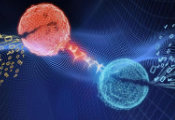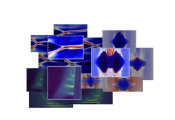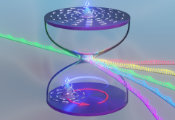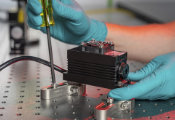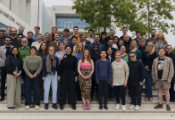UK Quantum Sensors Track Earth’s Magnetic Pulse
September 24, 2025 -- Five UK-made quantum magnetometers are being installed across the UK to provide complete national coverage of the Earth's magnetic field for the first time.
Quantum magnetometers are highly sensitive instruments that can detect variations in the Earth’s magnetic field with extreme precision.
These new sensors will provide data to the British Geological Survey (BGS) that will give scientists a more comprehensive understanding of how the magnetic field changes during extreme solar storms.
These storms result from solar wind and solar flares, creating temporary disturbances in Earth’s magnetosphere that trigger aurorae like those visible in the UK in May 2024.
During these events, variations in the geomagnetic field can be large enough to affect grounded technology such as power grids, Global Navigation Satellite System receivers and railway signals.
Until now, it has not been possible to study these regional variations, or ‘pulses,’ using the three existing UK geomagnetic observatories.
The new quantum magnetometres have been strategically placed around the country to fill gaps in national coverage and allow small-scale, local variations to be monitored.
Strategic locations across the UK
The sites of these new sensors have been carefully selected across the UK and have been picked for their suitability for detecting magnetic signals with minimal interference.
They are installed at:
- Aberystwyth, Ceredigion
- Boulby Underground Laboratory, North Yorkshire
- Blicking, Norfolk
- Chilbolton Observatory, Hampshire
- Thurso, Caithness
Dr Ciarán Beggan, geophysicist at BGS, said:
"We are incredibly excited to be able to study the magnetic field around the UK in greater detail than ever before. The installation of the five new quantum magnetometers will help to fill in the gaps between the existing observatories and will improve our vision of the changes taking place during extreme magnetic storms."
Enhanced protection for critical infrastructure
The more that is known about the nature of magnetic storms, how often they occur, how big they can be and how they interact with our natural and artificial environments, the better.
With more data, scientists can better advise government, the public and industry on where the risks are to the technologies we rely on.
This allows organisations such as the UK’s power distribution companies to take measures to protect supplies and services against the effects of space weather.
These new measurements will greatly enhance our understanding of how extreme magnetic storms impact different parts of the country.
This means that society in general will have access to the advice and information needed to understand where we are vulnerable to magnetic storms and to make informed decisions on how to mitigate against them.
UK expertise drives innovation
The quantum magnetometers have been developed and optimised with the help of RAL Space, operated by the Science and Technology Facilities Council (STFC), and the University of Strathclyde.
Thanks to the teams’ expertise, these sensors can detect changes in the magnetic field 100 times smaller compared to standard sensors, at a faster rate and with improved accuracy.
Dr Sarah Nash, Programme Lead at STFC RAL Space’s Chilbolton Observatory, said:
"We’re excited to welcome this quantum sensor to Chilbolton Observatory’s diverse suite of scientific instruments. From satellite tracking and weather monitoring to radio astronomy, our site already supports a broad spectrum of cutting-edge research that takes advantage of our unique location and environment."
"Adding quantum technology for space weather monitoring is a first for us, and it’s especially exciting that our colleagues in Harwell have played a key role in its development."
The quantum magnetometers were developed through the UK National Quantum Technology Programme, specifically the Quantum Technology Hub in Sensors and Timing.
The funding to build and deploy the sensors comes from UK Research and Innovation.



